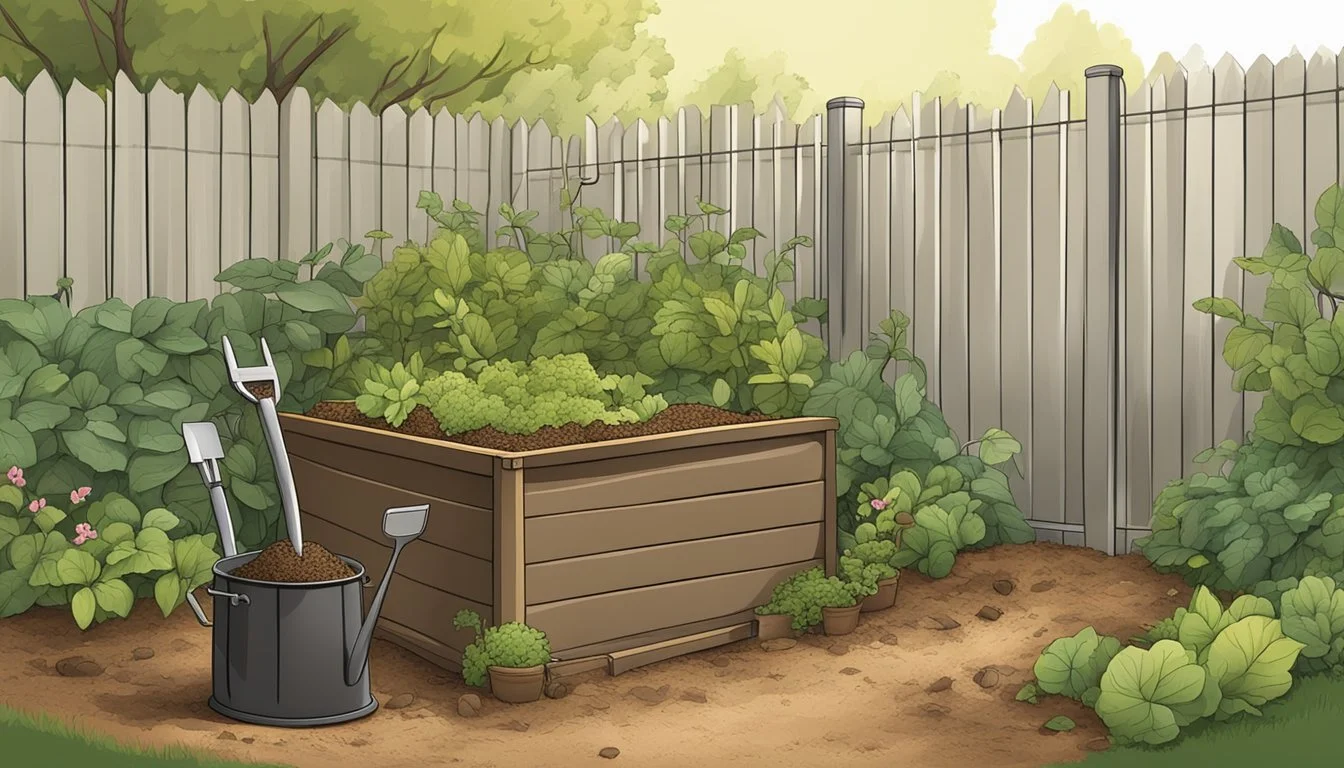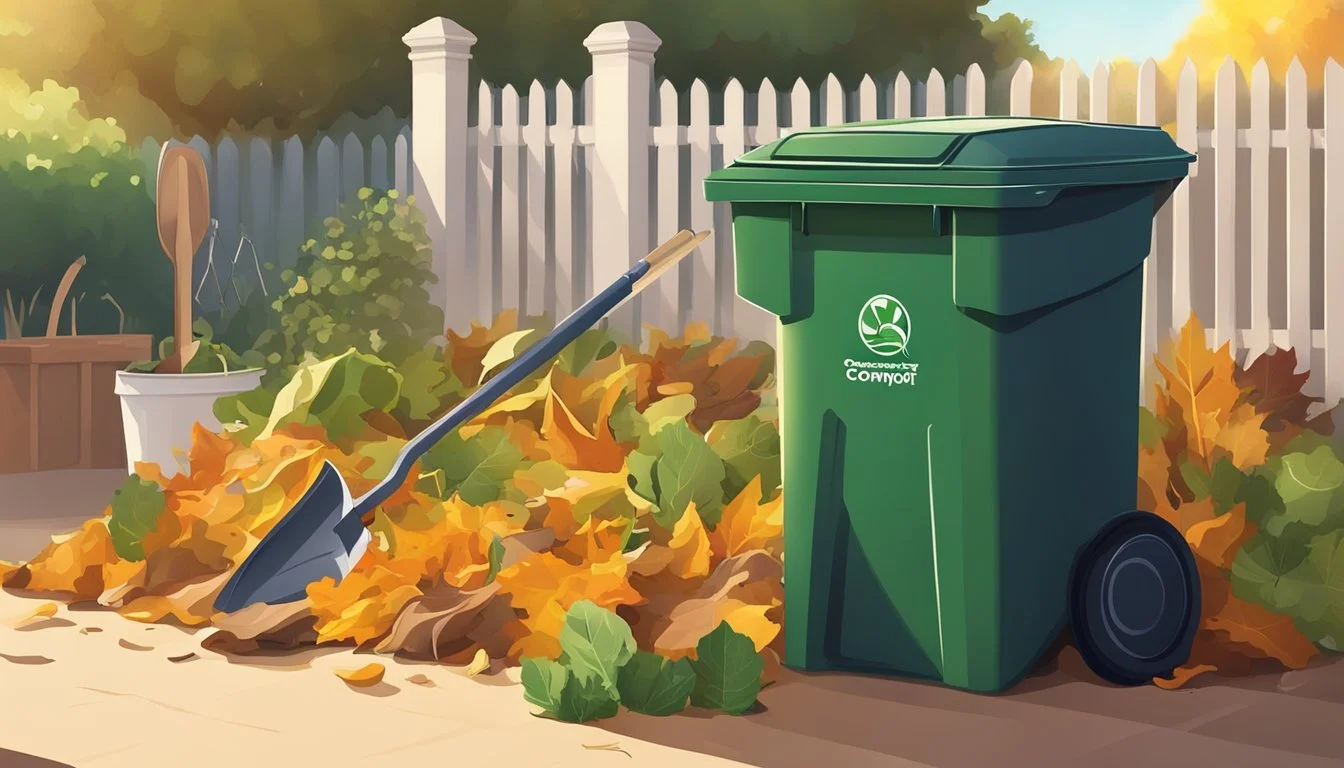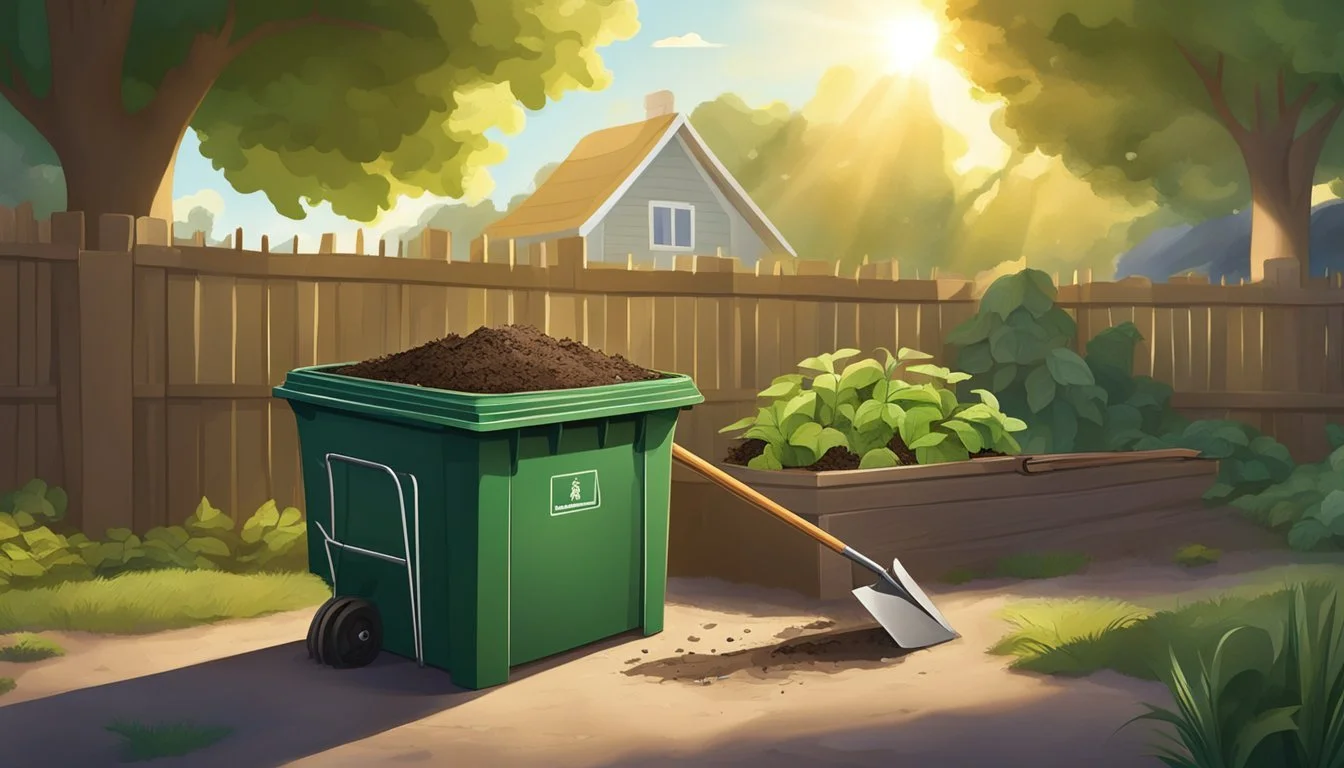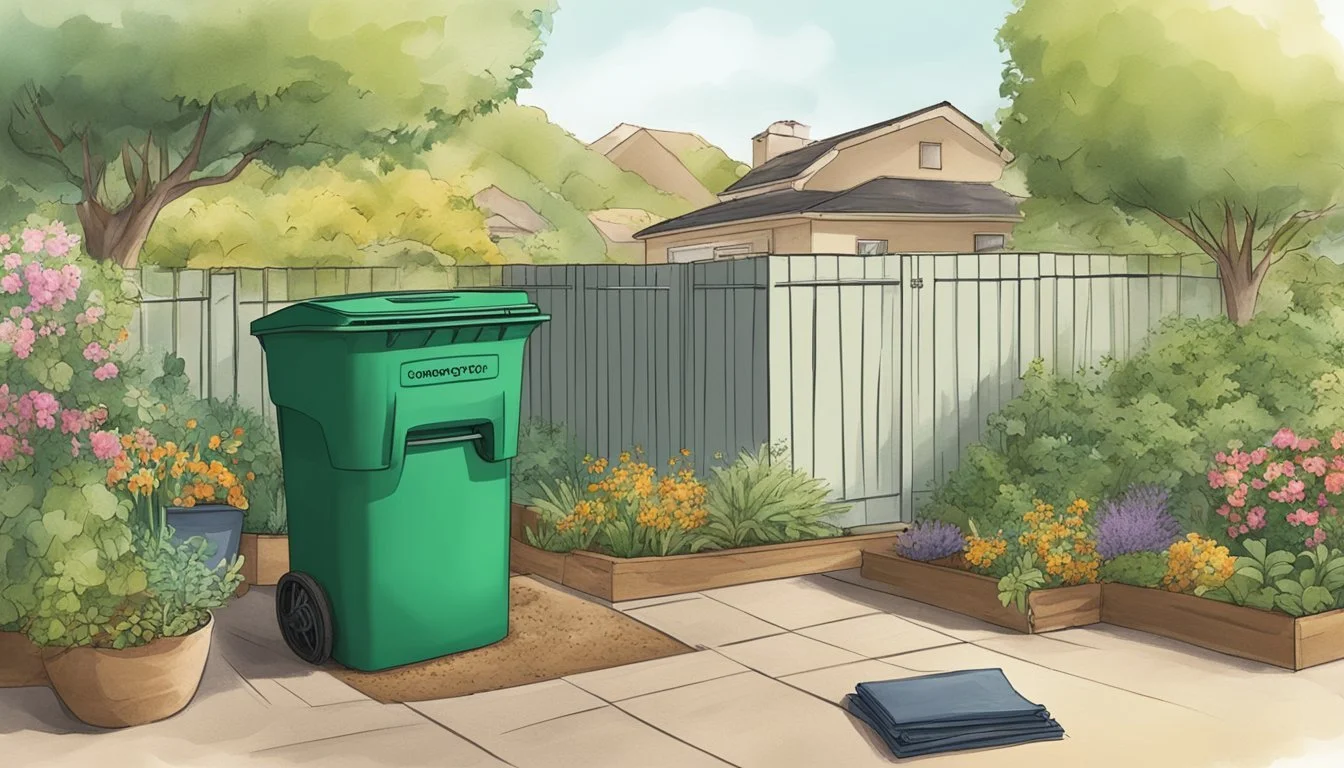Guide to Composting in Simi Valley, CA
Essential Tips for Local Residents
Composting is an environmentally friendly practice that has gained momentum in many communities, including Simi Valley, California. As both residents and officials become more conscious of the need for sustainable waste management, composting presents itself as a viable solution for reducing landfill waste while nurturing gardens and landscapes. In Simi Valley, residents have access to various programs and resources designed to make composting an easy and rewarding endeavor.
The city recognizes the importance of composting by offering free compost to its residents as well as designated days where waste can be disposed of responsibly at the local landfill and recycling center. Not only does this support a circular economy, but it also promotes the enrichment of local soil quality, which is particularly beneficial for the arid California climate. By diverting organic household waste such as kitchen scraps and yard trimmings from the trash bin to the compost pile, Simi Valley residents actively contribute to a greener environment.
To aid in these efforts, the city encourages home composting by providing information on how to balance the essential ingredients: nitrogen, carbon, water, and air. Simple guidance on starting a compost pile, choosing the right materials, and maintaining the composting process can empower residents to take an active role in waste reduction. Through community support and readily available educational resources, Simi Valley is fostering a culture of sustainable living, one compost pile at a time.
The Basics of Composting
Composting is an effective method to enrich soil and reduce waste in Simi Valley, CA. Understanding the process and its benefits can significantly impact local gardens and the environment.
What Is Composting?
Composting is the natural process of recycling organic matter, such as leaves, fruit scraps, and coffee grounds, into a rich soil amendment known as compost. It involves a balance of four key components: carbon (browns), nitrogen (greens), water, and air. Carbon-rich materials add bulking agents that allow air to filter through the pile, while nitrogen-rich materials provide the proteins and enzymes necessary for microorganism nourishment. Gardeners in Simi Valley typically layer these materials in a pile or bin, carefully managing moisture and aeration to encourage decomposition.
Benefits of Composting
Composting offers a multitude of benefits for Simi Valley's agricultural and gardening communities. It enriches soil, helping retain moisture and suppress plant diseases and pests. Making compost keeps these organic materials out of landfills where they take up space and release methane, a potent greenhouse gas. Additionally, compost encourages the production of beneficial bacteria and fungi which break down organic matter to create humus, a nutrient-filled material that improves soil structure. This creates a healthy, sustainable environment for plants to thrive, reducing the need for chemical fertilizers and providing abundant resources for a vigorous garden.
Setting Up Your Composting System
Creating a functional composting system in Simi Valley, CA, requires careful selection of location, the right type of containment, and a balanced mix of materials.
Choosing the Right Location
One should select a location that is convenient yet does not interfere with daily activities or violate any local bylaws. Ideally, the site should provide partial shade to protect the compost from overheating and excessive drying by the California sun, but also be near a water source for maintaining moisture.
Selecting a Compost Bin
Size and design are critical when selecting a compost bin. It should be large enough to handle your waste but not so big that it becomes unmanageable. Consider using closable containers to deter pests. The City of Simi Valley provides resources for residents, including information on how you can pick up some composting equipment.
Balancing Greens and Browns
For a healthy compost, balance nitrogen-rich "greens" like fruit and vegetable scraps, coffee grounds, and lawn trimmings, with carbon-rich "browns" such as shredded paper, sawdust, and dry leaves. Aim for a ratio of about 1 part greens to 3 parts browns to maintain an effective composting process.
Material Type Examples Nitrogen or Carbon Greens Coffee grounds, vegetable scraps Nitrogen Browns Shredded paper, sawdust Carbon
Maintaining this balance accelerates the decomposition process and produces rich compost ideal for enhancing garden soil.
Composting Methods
In Simi Valley, residents have options to turn organic waste into nutrient-rich soil through various composting techniques. Each method caters to different needs, space availability, and maintenance levels.
Traditional Composting
Traditional composting is a straightforward process where organic waste is stacked in a bin or heap. This method utilizes a balance of nitrogen (green waste) and carbon (brown waste), along with adequate water and air to break down the materials. Regularly turning the pile is crucial to introduce oxygen and prevent anaerobic conditions, which can cause odor and slow decomposition. This method effectively kills most pathogens and weed seeds when the pile reaches the appropriate temperatures.
Vermicomposting
Vermicomposting involves the use of specific species of earthworms, such as red wigglers, to accelerate the composting process. These worms consume organic waste and produce worm castings, which are a high-quality form of finished compost. The process is contained, typically in a bin that allows for aeration and drainage, making it suitable for indoor or outdoor settings. Vermicomposting is an efficient way to handle kitchen scraps, but it requires careful moisture management and cannot process meat or dairy products.
Trench Composting
Trench composting is a less labor-intensive method where organic waste is buried directly in the ground or garden beds. Over time, the material decomposes naturally, enhancing soil quality without the need for a formal compost structure. This method can be slower than others; however, it effectively utilizes earthworms already present in the soil, and because the material is buried, it has an added benefit of being less accessible to pests. Trench composting can be performed in rotating sections of a garden to systematically improve soil fertility over time.
Materials for Composting
In Simi Valley, CA, understanding what materials are suitable for composting is vital for creating nutrient-rich soil. Two main categories exist: green materials rich in nitrogen, such as food scraps and yard trimmings, and brown materials, which are carbon-rich elements like dry leaves and branches.
What to Compost
Greens to Include:
Food scraps: fruits, vegetables, coffee grounds, eggshells
Yard trimmings: grass, leaves, plant clippings
Manure: cow, horse, chicken, rabbit
It's pivotal that residents balance their compost piles with the right mix of greens and browns to ensure a successful decomposition process.
Browns to Include:
Dry leaves
Sawdust
Cardboard egg cartons
Shredded paper (ink-free)
The blend of these materials not only helps to manage moisture levels but also facilitates airflow, which is crucial for composting.
Materials to Avoid
To prevent attracting pests and causing odors, certain items should never be placed in a compost pile. It's important for the health of your compost and your community.
Meat or fish scraps: These can attract pests and cause odors.
Dairy products: Similar to meat, they can create odor issues and attract unwanted critters.
Diseased plants: They may transfer diseases back into the garden.
Diseased plants should not be composted as they can spread pathogens to the compost. This is one of the frequently asked questions by new composters.
Composting in Simi Valley is an effective way to recycle organic waste into valuable fertilizer for your garden while reducing the impact on local landfills.
Maintaining Your Compost Pile
Proper maintenance of a compost pile ensures efficiency and effectiveness in transforming organic waste into nutrient-rich soil. Two key elements for successful composting are aeration and moisture control, along with monitoring the pile’s progress.
Aeration and Moisture Control
Aeration is crucial to maintaining an active composting process. It provides oxygen to the microorganisms that break down organic matter. Without sufficient oxygen, the pile can become anaerobic and emit unpleasant odors. Gardeners should routinely turn their compost to incorporate air, using tools like the Aerator to make the task easier and more effective.
Frequency: Turning the pile every 1-2 weeks is generally recommended.
Moisture content is equally important. The pile should be kept moist, similar to the feel of a wrung-out sponge. If the compost is too dry, microbial activity slows down; if it's too wet, oxygen is displaced, leading to odor problems.
Moisture Level: Aim for 40 to 60 percent moisture to maintain optimal conditions for composting.
Monitoring Compost Progress
The progress of a compost pile is indicated by temperature and time. As microorganisms work, they generate heat, which is an essential part of the decomposition process. An optimal temperature range accelerates breakdown while killing weed seeds and pathogens.
Temperature Range: Maintain between 140°F – 160°F for best results.
Over time, the pile will reduce in volume and the material will take on the appearance of dark, crumbly topsoil. This is when compost is generally ready to use. Depending on the balance of materials, turning frequency, and climate, the composting process can take anywhere from a few months to over a year.
Residents of Simi Valley can benefit from local resources like the Simi Valley Landfill and Recycling Center, particularly on designated Free Residential Cleanup and Recycling Days for disposing of excess waste that may not be suitable for composting at home.
Using Your Finished Compost
Once residents in Simi Valley have created their finished compost, they can confidently and effectively enrich various parts of their garden and landscaping. One can think of compost as a soil amendment that significantly boosts the nutrient content and improves soil structure.
In the Garden
For planting beds: Evenly spread a 2 to 3-inch layer of compost over the garden area and mix it into the top 6 inches of soil before planting. This enhances the soil's fertility and water retention.
As a soil conditioner: Compost can transform soil by improving its structure, increasing its ability to hold water, and adding vital nutrients. Working compost into the soil around plants can foster healthier plant growth.
In Landscaping
As mulch: A 3-inch layer of compost can be laid around trees, shrubs, and perennials. This mulching works effectively to retain soil moisture, suppress weeds, and gradually enrich the soil as it breaks down.
Pathways and erosion control: Use compost to stabilize areas prone to erosion or lay down a layer on walkways within your landscape to suppress dust.
For Potting Soil
Residents can create a nutrient-rich potting soil by mixing compost with sand and peat in equal measures, providing an excellent growing medium for potted plants.
Applying compost is both a responsible recycling practice and a boon to Simi Valley gardeners, contributing to the sustainability and beauty of their outdoor spaces.
Troubleshooting Common Issues
When composting in Simi Valley, CA, residents might face a few common issues such as odor, pests, aeration complications, moisture imbalance, and the presence of pathogens. This guide provides clear solutions to these problems, ensuring a healthy composting process.
Odor: A foul smell often signals an imbalance in the compost pile. To rectify this:
Excess Moisture: Add dry, carbon-rich materials like straw or leaves to absorb excess moisture.
Poor Aeration: Turn the pile regularly to provide oxygen, which helps reduce anaerobic conditions that cause bad odors.
Pests: Unwanted visitors such as rodents and insects may be attracted to the compost.
Inappropriate Materials: Ensure that meat, dairy, and oily foods are excluded from the pile.
Physical Barriers: Use compost bins with lids or enclosed tumblers to deter pests.
Aeration: Adequate airflow is crucial for the decomposing process.
Turning the pile weekly will ensure even aeration and decomposition.
Moisture: The pile should have the consistency of a wrung-out sponge.
Too Dry: Add water or wet, green materials.
Too Wet: Mix in dry, brown materials, and protect from rain if necessary.
Pathogens: Reducing harmful microbes is essential for safe compost.
Heat Generation: A hot compost pile will kill most pathogens. Aim for a temperature between 131°F to 170°F.
Avoid Contaminated Material: Do not introduce diseased plants or pet wastes into your pile.
Community and Environmental Impact
Composting initiatives in Simi Valley demonstrate a commitment to sustainability, providing tangible benefits to the community and environment. These efforts reduce waste, lower landfill dependence, and mitigate climate change effects.
Simi Valley Community Gardens
Community gardens in Simi Valley incorporate composting practices to improve soil quality and enhance local green spaces. These gardens serve as educational hubs, illustrating the value of organic matter recycling to residents. By returning nutrients to the earth, community gardens foster greater environmental stewardship.
Reducing Waste and Landfill Use
Composting significantly cuts down on the volume of waste sent to landfills. Simi Valley residents participate in free compost giveaway events, which not only provide nutrient-rich soil amendments but also encourage a cycle of reuse that alleviates pressure on local landfills. This practice redirects organic waste that would otherwise contribute to landfill mass and associated environmental concerns.
Composting and Climate Change
The practice of composting organic waste plays a critical role in addressing climate change. Composting reduces methane emissions, a potent greenhouse gas, which is often generated from organic materials decomposing in anaerobic conditions in landfills. By processing organic waste aerobically in composts, Simi Valley's efforts contribute to a broader strategy for combatting climate change on a local scale.
Local Resources and Guidelines
This section provides specific details on composting within Simi Valley, CA, guided by both state and local regulations on waste management, as well as available community services.
California State Regulations
California's Department of Resources Recycling and Recovery, commonly known as CalRecycle, sets forth the regulations for composting to support the state’s waste reduction goals. Individuals and businesses are encouraged to engage in composting while adhering to the state's mandate to reduce organic waste. California has established detailed guidelines to manage diverse waste streams, ensuring environmental sustainability is a priority.
Ventura County and Simi Valley Services
The City of Simi Valley offers a variety of waste management services, aligning with Ventura County directives. Residents have access to facilities such as the Simi Valley Landfill and Recycling Center, which allows for the disposal of residential waste during Free Residential Cleanup and Recycling Days. Furthermore, the city promotes recycling through events like the e-waste recycling and compost pickup, held in collaboration with Waste Management and described on sites like the Simi Valley Acorn. This synergy between the community, local government, and waste management services reflects Simi Valley's commitment to sustainability.
Getting Involved and Learning More
Residents of Simi Valley can enhance their gardening skills while contributing to their community's health and sustainability through local composting initiatives. These efforts offer an array of educational resources and opportunities for active engagement.
Workshops and Educational Events
Simi Valley and surrounding areas are rich with educational events that guide individuals through the essentials of composting. The City of Simi Valley and partners like Waste Management often hold free residential e-waste recycling and compost pickup events, which are not only an introduction to recycling but also provide valuable resources for starting composting at home.
Furthermore, organizations across Riverside County offer workshops to educate residents about the benefits of composting. For example, one can become a Master Composter through certificate training provided by the County Waste Resources Department, which has a tradition of encouraging composting as a means of recycling organic waste.
Volunteering and Community Participation
Volunteering is a powerful method for getting hands-on experience and networking with others who are passionate about composting and gardening. Local community gardens often seek volunteers to help with various composting projects, presenting a chance to learn while contributing to a greener environment.
Participation in community-scale composting can also require coordination with local agencies. For instance, composting projects that exceed certain thresholds would need to coordinate with the local environmental health department as per guidelines by CalRecycle.
Engaging in these opportunities, individuals can extend their gardening expertise, learn the ins and outs of recycling organic waste, and access free resources to become proficient composters in their community.
Frequently Asked Questions
What is composting and why is it important?
Composting is a process where organic matter, such as kitchen scraps and yard waste, decomposes to create a nutrient-rich soil additive. It plays a crucial role in waste reduction and soil health enhancement.
When can residents of Simi Valley participate in free composting events?
The City of Simi Valley and Waste Management periodically host free composting events for residents to drop off e-waste and collect compost.
Where can residents find more information on composting services?
Information about residential recycling and waste services, including composting, can be found on the City of Simi Valley's website.
How does composting benefit the soil?
Compost improves soil structure, promotes healthy root growth, and enhances nutrient content, leading to more robust plant development.
Question Answer How often are free landfill days offered? Visit the City of Simi Valley's website for the schedule. Can composting help with waste management? Yes, composting significantly reduces the amount of waste sent to landfills.
Glossary of Composting Terms
Composting: The process of breaking down organic material, such as leaves, fruit, and vegetable scraps, into a nutrient-rich soil amendment known as compost.
Compost: The end product of composting; a dark, crumbly, earthy-smelling material that enriches soil and improves plant growth.
Carbon: Often referred to as 'browns' in composting, these materials are rich in carbon and include dried leaves, straw, and paper. The optimal carbon to nitrogen ratio is vital for effective decomposition.
Nitrogen: Known as 'greens,' these materials provide nitrogen to the composting process. Examples include food scraps, coffee grounds, and grass clippings.
Aeration: Introducing air into a compost pile to promote aerobic decomposition, which can be achieved through turning the pile or with systems like an aerated static pile.
Vermicomposting: A method of composting that uses worms, usually red wigglers, to break down organic matter.
Term Definition Composting The controlled decomposition of organic matter into compost. Compost Organic material that has been decomposed in a composting process. Carbon Element that acts as a source of energy for microorganisms. Nitrogen A crucial element for protein synthesis in the composting process. Aeration The process of adding air to compost to aid in decomposition. Vermicomposting Composting using worms as decomposers.
Additional Composting Resources
Residents in Simi Valley interested in composting can access a variety of resources to facilitate their efforts. They have the opportunity to obtain composting materials and pursue waste management initiatives within their community, each offering distinct benefits to soil health and the environment.
Local Composting Sites and Services:
Simi Valley Landfill & Recycling Center: Offers information on composting and a drop-off location for organic waste.
Home Composting Guide by CalRecycle: This online resource provides a comprehensive guide on how to start composting at home, detailing the proper balance of materials required for successful compost CalRecycle Home Composting.
Educational Materials:
City of Simi Valley's Environmental Services: Publishes materials pertaining to composting benefits, such as reducing landfill emissions and promoting soil health.
Composting Workshops: Periodically hosted to educate the public on sustainable waste practices.
E-Waste Management:
A drop box for e-waste is located at Waste Management/G.I. Industries, supporting electronic recycling efforts alongside composting Residential Recycling and Waste Services.
Residents can also utilize the free compost events hosted by the city, where apart from e-waste recycling, compost can be picked up for personal use, showcasing a direct benefit of the city's recycling initiatives Drop off e-waste, pick up some composting.
As they engage with these resources, homeowners and businesses in Simi Valley can contribute to a greener community through effective composting and recycling practices.












